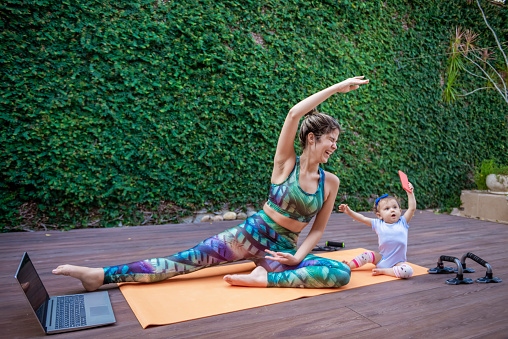Welcome to mbg moves! We've been training at home more than ever lately - and we know our readers are too. To keep your fitness routine feeling fresh, we publish a new home workout every Monday to get the week off to a good start. Every month, routines are introduced by a different incredible trainer that we love. Now we come to our В .

I've put together this seven minute full body workout that you can do anytime, anywhere. After a quick warm up, we'll do five different movements targeting different muscle groups in your body. If you are looking for an additional challenge, you can repeat the routine again. Just grab a light or medium sized mini band and you're good to go!
Your 4-week challenge: As Christmas is just around the corner, sticking to a consistent exercise program can be a challenge. This month, I'm going to share four different routines you can do at home or while traveling - each one is quick, efficient, and fun too. I encourage you to include these routines in your weekly exercise schedule as often as possible, but try to do so at least two or three times a week.
Equipment: mini band
Instructions: Go from one exercise to the next as instructed. Repeat the
routine all over again if you want a longer workout.
Sideways walk
Side corridor
Image by mbg creative
Starting on the right side of your mat, place the mini band just above
your ankles. Start with your feet hip-width apart; come in a half-squat.
Take a large step to the left with your left foot, then a small step to
the left with your right foot. Be careful not to let your knees buckle.
Continue until you reach the other side of your mat, then reverse the
movement and return to the start.
Repeat for 60 seconds.
Tap the backs
tap on the back
Image by mbg creative
Start standing with the mini band just above your ankles.
Shift your weight onto your left foot, then take a diagonal step back
with your right foot.
Continue for 30 seconds, then switch sides and repeat the process.